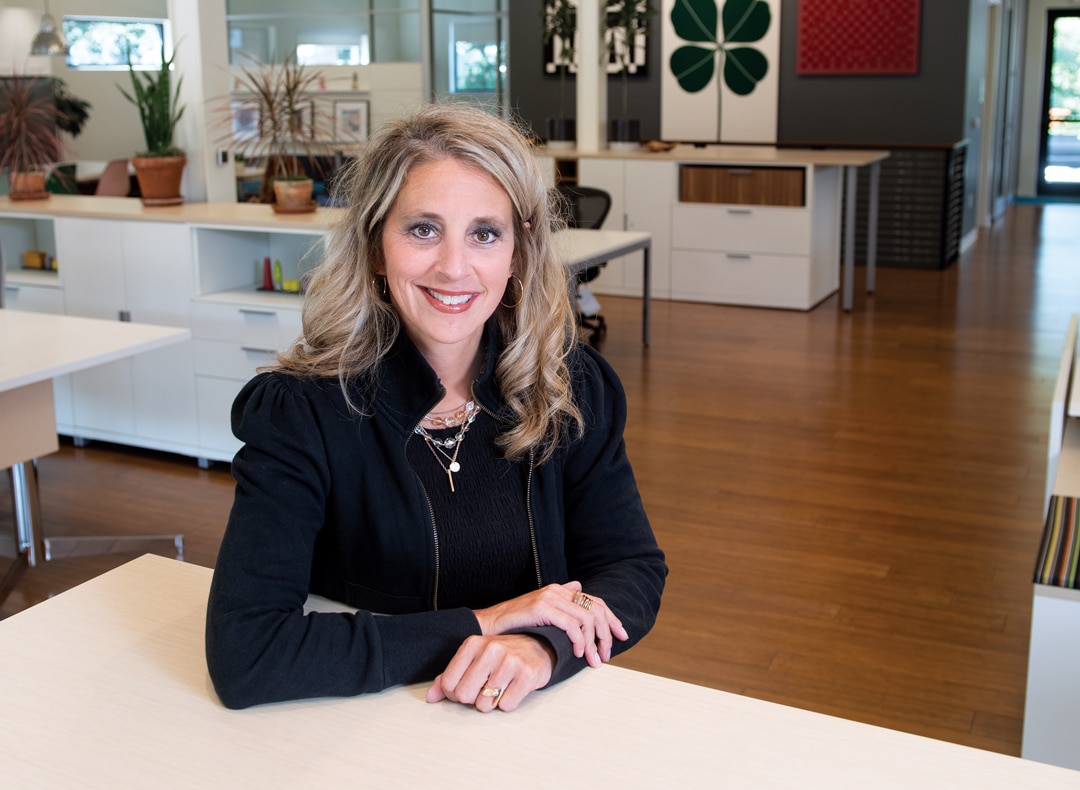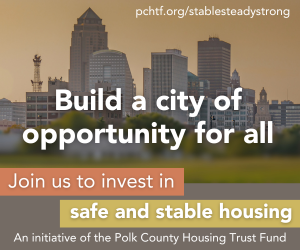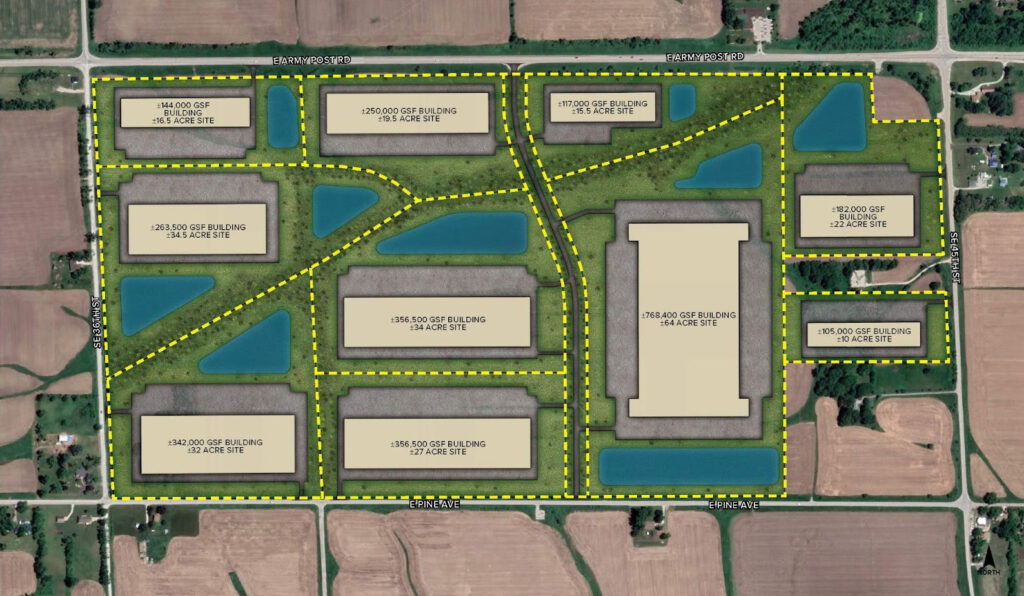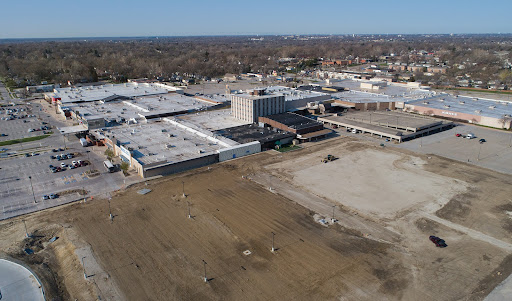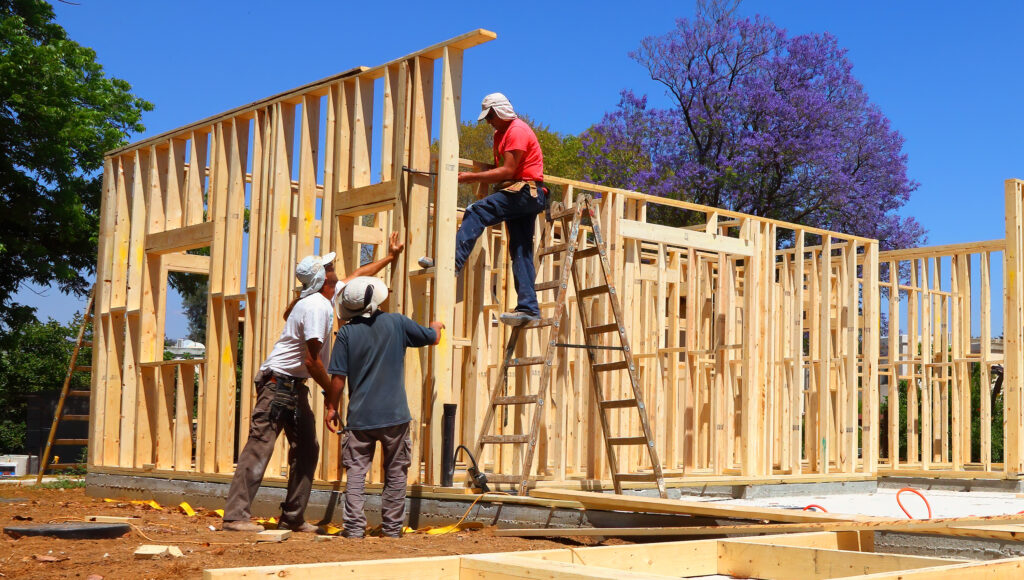The Return
Office market continues post-pandemic evolution as it negotiates return-to-office

Michael Crumb Aug 30, 2023 | 6:00 am
8 min read time
1,971 wordsBusiness Record Insider, Real Estate and DevelopmentThe commercial real estate sector is doing well and is poised for future growth as companies navigate through the uncertainty that continues in the office environment, experts said during the Business Record’s Project 515 event that focused on office space.
The Business Record hosted the second in its Project515 series on Aug. 24 to learn more about how the commercial real estate market is faring and what challenges might lie ahead for the remainder of 2023 and into 2024.
The conversation featured Justin Lossner, senior managing director at JLL; Mike Macri III, associate professor of practice-real estate development, community and regional planning at Iowa State University; Cody Christensen, director of development services department for the city of Des Moines; Cari Trilk, vice president of design services at Pigott; and Alec Wilcox, broker at Cushman & Wakefield.
They touched on a wide range of topics. Here are some of the highlights from the hour-long conversation. Their comments have been edited for brevity and clarity.
What are some challenges the office market will face in the future?

Wilcox: The construction costs. Those are starting to level off. As landlords deal with a rise in vacancy rates, they have become more aggressive to try to land that new tenant. We’ve seen tenant improvement allowances rise … sometimes 80 to 90%. The issue is if you’re going to build out a space, the construction costs have gone up 25 to 35%. So for a tenant, when you’re looking for a deal, you’re not seeing a 35% incentive because the construction costs have gone up. So not only are the landlords taking a hit trying to win deals, but the tenants aren’t necessarily seeing that same kind of incentive.
Lossner: One thing we continue to hear about is conversion of products. Between 2000 and 2019 there was something like 6.6 million square feet of total U.S. conversion. In 2021 through 2022 we saw a record amount of conversions to the tune of 14.9 million square feet. There is the opportunistic side of that that is already playing out, but the challenge is you have to have the right floor plate if you’re going to convert something. There are some beautiful buildings, even in this market, that you’d like to see someone come in and create flashy condos or multi-family, but if your core of the structure sits in the wrong spot, it could make it really difficult to convert that type of project. There isn’t a silver bullet solution to the major challenge I see, which is, how do you solve this traditional office vacancy?
Is conversion to residential a viable option in the long term?
Macri: This conversion process started 20 years ago. Des Moines has done 2 million square feet of renovations and a lot of the easy conversions have been done. But you get a lot of the newer buildings – they’re just not functionally designed to accommodate a multi-family environment. It was never set up to be multi-family. Even if you convert to a hotel, there’s just not enough dimension of the interior to make it work. On a macroeconomic level, Des Moines is a very insurance-heavy environment. One of the things: If you deal with portfolio loans or you try to get financing through an insurer, a lot of times income from those loans is collateralized by companies owning large office blocks. A lot of the pullback you’re seeing on the insurance industry coming from the coasts and the south is because those office environments that create an income stream that supports all the work is decreasing in value because the employees aren’t there working, and leases are going away. You’re seeing shorter leases, lease rates being adjusted and valuations are dropping. If you have valuations dropping on your investment that have been stable for the past 20-30 years, and all of a sudden that stabilized investment is down 10 to 20% on top of increasing draws on capital, it becomes cheaper to pull out of a market than to stay and deal with the asset you’ve got.

Trilk: We always try to watch what’s happening on both of the coasts and the trends that we’re seeing that tend to make their way into the Midwest more slowly. We’re still feeling like real estate is still reasonable here in the Midwest as compared to some of those larger markets so people are still trying to figure out what to do with office space and they’re not ready to downsize right at this moment until they have a better handle on what their organization is going to do. Compared to other markets, the Midwest market seems pretty stable in that way.
How will Principal’s decision to bring people back to the office three days a week affect the core Central Business District?
Lossner: It’s overwhelmingly positive. Downtown has been slower to react because of the size of the companies. A lot more complexity in their decision versus the smaller companies out west, which have been very active in leasing. These larger companies are finally making the choice to bring people back. Culture, collaboration and training, all those things are so much easier if you have some level of occupancy. If you look globally when you look at office, the U.S. is hovering around 50% on average. If you look at places like Paris and Tokyo, they’re already up to 75%. If you look in Asia and some of the leading cities the U.S. does a ton of business with, they’re up 80 to 110% of occupancy, which means they’re putting more people in the office than they were pre-pandemic. Traditionally, the U.S. has always been this office market where everyone is in five days a week. Now it’s the opposite; we’re actually slower to evolve in the back-to-office climate. There’s two companies that own restaurants on the third floor of 801 Grand, and their families and employees are very happy that they’ll see more volume midweek. It’s good to get people back.
Wilcox: We’ve had, unfortunately, several examples of downsizes or completely vacating the market. It’s nice to see something on the opposite from a large, very well-respected business. So much of this has to do with economic development. People coming back to the office is going to impact, yes, other office users, but [also] retail downtown and the vibrancy downtown. As far as how Principal impacts everybody else’s decisions, many businesses, as their leases have rolled over, have decided to downsize or right-size. If Principal is coming back three days a week, they need space for all those people, and I anticipate that more and more businesses as their leases roll up are going to think similarly and might not downsize or even expand and we’ll be able to eat into that vacancy rate and curb the trend.

Christensen: I literally jumped out of my seat and cheered when I read that headline, because I was so excited for the vibrancy that bringing more people to downtown will add to our environment. I think we’ll see more of that. Initially, there will be challenges. One company might be working remote more than others. There might be some picking off of employees who aren’t happy about coming back to the office space, but I think over time it will level out and we’ll hit a good balance where productivity remains and collaboration has peaked again.
How are companies like Pigott adapting to the evolving office environment?
Trilk: It’s a challenge. One thing we have seen come to light is there needs to be this really strong connection between HR, IT and facilities. Those three things need to be in sync. You can’t have a space that’s beautiful without having the right organizational norms. That’s something we’re finally seeing, those three groups come together. It is an absolute challenge to offer flexibility. There’s a lot of changes we’re seeing on the HR front. Some of the numbers we keep tabs on talk about what people are wanting in terms of flexibility. The percentage of people who want flexibility in when they work is tracking at 93%, and that’s higher than the flexibility of where they work. It’s all about that work-life balance, the work-life blend. It’s really complicated right now. I would encourage all companies to be thinking about flexibility and offering options for hours you might be in.
How has the vacancy rates affected property values?
Christensen: Vacant office space is a worry for property values. If we see an exodus of our Central Business District, as we lose people there’s a potential for a decline in assessed property values. But I’m not sure we’re experiencing that. It seems like even [though] there’s a number of office spaces on the market right now, we’re still seeing interest in those buildings. We’re still having proposals come through for new tenants. I don’t think it’s as bad as what it was portrayed to be several months ago. I think we’re seeing a progression to where we’re crawling out of a hole that we thought we were in. To be honest, we weren’t ever in it. It was more the fear of where it could go. I think things are heading in a good direction right now.
On looking at the meaning of occupancy rates
Macri: We get statistically off-kilter because we may have one building go vacant, and all of a sudden, it will change the statistical vacancies by between 5% and 10%, just by one building, and it throws off the numbers. When you step back and look from a more holistic approach, take a look at all the numbers, we’re doing pretty well. We tend to see the deals coming four, six, eight months in advance. Those are things that will start to come into the public at the end of the year, or early next year, but those are all things happening right now.
Is there an appetite for non-traditional adaptations for vacant office space?
Trilk: Absolutely. We’re doing many more projects than we have done in the past in those somewhat nontraditional office building spaces. We’re seeing many more projects being done in a converted warehouse space or something like that. And it ties back to it really needs to be a destination. Having some of that interesting architecture or amenities that are just outside of the norm compared to what we saw decades ago really fosters that idea of the workplace being a destination.
Christensen: We’re always open to new and innovative ideas and proposals. Whenever we have someone kicking around an idea, we do a lot of preliminary discussions where we can talk about new concepts we haven’t seen. Do I think there are other uses for vacant office buildings? Absolutely. There’s opportunities for more restaurants and entertainment. We also have some buildings that are being converted from other uses to offices. If there’s unique proposals out there, bring them our way. We want to hear about them.
Lossner: Entertainment continues to drive … a lot of the sports that are happening in every single suburban market, we’re starting to see some downtown centers figuring out how to incorporate that into space in unique ways. That creativity will continue to evolve. But I will say overwhelmingly there is still an appetite for office space and I think that appetite is stronger. It may not look incredibly different than it did in 2019. It’s gotta be nice. It’s gotta be highly amenitized. You gotta give people a reason to come back. Those aren’t new arguments. Those are the same things we were talking about in 2019. We only threw fire on it and sped it up. And it’s probably more important than it was, but there’s still plenty of appetite for traditional office space.

Michael Crumb
Michael Crumb is a senior staff writer at Business Record. He covers real estate and development and transportation.

